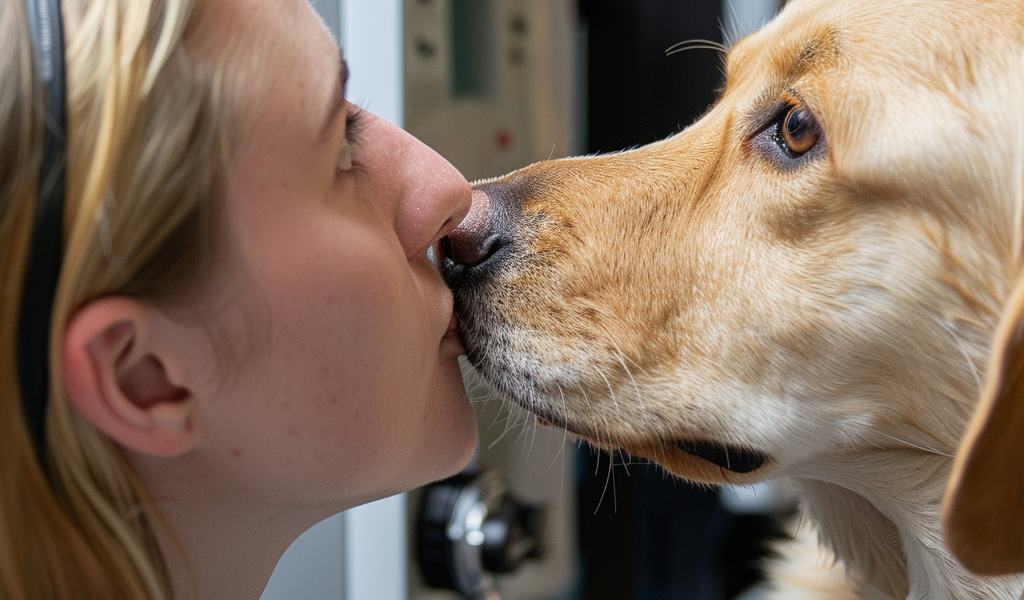Dogs Sniffing Out PTSD
March 28, 2024
Scientists have discovered that dogs can be trained to detect stress-related volatile organic compounds (VOCs) in human breath, potentially identifying the onset of PTSD flashbacks. This groundbreaking study utilized two dogs to distinguish between the breath of individuals recalling traumatic experiences and control samples, achieving over 70% accuracy.
The findings suggest that assistance dogs could offer earlier intervention during PTSD episodes by detecting specific stress markers, highlighting the potential for more effective PTSD management. The study also opens avenues for further research into the biochemical signals associated with PTSD symptoms and how dogs can be trained to respond to them.
Key Facts:
- Detection of Stress VOCs: Two dogs were trained to identify breath samples indicating stress with high accuracy, suggesting dogs can detect biochemical markers of PTSD in human breath.
- Potential for Early Intervention: This ability could enable assistance dogs to provide earlier support for individuals experiencing PTSD flashbacks, enhancing the effectiveness of their assistance.
- Future Research Directions: The study underscores the need for larger-scale research to validate these findings and explore the specific hormonal pathways dogs may be responding to in stressed breath samples.
Dogs’ sensitive noses can detect the early warning signs of many potentially dangerous medical situations, like an impending seizure or sudden hypoglycemia. Now, scientists have found evidence that assistance dogs might even be able to sniff out an oncoming PTSD flashback, by teaching two dogs to alert to the breath of people who have been reminded of traumas.
Comparing Callie and Ivy’s successful identifications with the human participants’ self-reported emotions revealed that Ivy’s performance correlated with anxiety, whereas Callie’s correlated with shame. Credit: Neuroscience News
“PTSD service dogs are already trained to assist people during episodes of distress,” said Laura Kiiroja of Dalhousie University, first author of the paper in Frontiers in Allergy. “However, dogs are currently trained to respond to behavioral and physical cues. Our study showed that at least some dogs can also detect these episodes via breath.”
PTSD arises from exposure to a catastrophic event: symptoms include re-experiencing that catastrophic event, hyperarousal, avoiding any reminders, and cognitive or mood issues. Among other forms of assistance, dogs can help patients by alerting to and interrupting episodes when their companions are struggling with their symptoms. If dogs could respond to stress markers on the breath, they could potentially interrupt episodes at an earlier stage, making their interventions more effective. All humans have a ‘scent profile’ of volatile organic compounds (VOCs) — molecules





